This post may contain affiliate links. Please see our disclosure policy.
Pickled habanero peppers are a fiery way to preserve the bold, fruity heat of one of the hottest peppers around. Whether you use them in salsas, stir them into chili, or slice them up for tacos, these pickled habaneros bring serious spice and bright flavor to any dish.
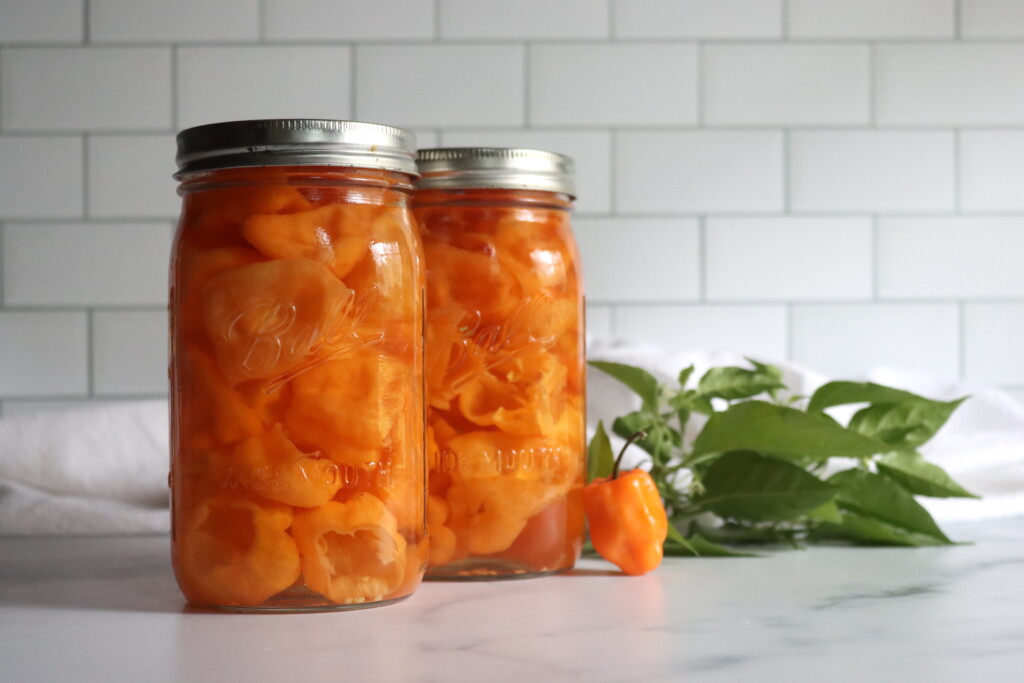
If you love cooking with heat—or want to preserve a summer harvest of habaneros—this quick pickling recipe is a great one to keep in your canning rotation. These small-batch pickled peppers are vinegar-based, shelf-stable, and ready to use straight from the jar. I like to pickle habaneros whole so I can grab one or two as needed for recipes, but you can slice them thin if you’re planning to use them more like a topping.
The heat mellows just a bit after pickling, but don’t be fooled—these are still hot. They’re not for casual snacking, but for those who love chili heat, they’re a pantry essential.
Why You’ll Love Them
- Packed with heat: Habaneros have a distinct, fruity fire that shines in pickled form.
- Flexible prep: Leave them whole, sliced, or chopped depending on how you plan to use them.
- Long shelf life: Properly processed, they’ll maintain peak quality on the pantry shelf for 12 to 18 months.
And don’t waste that pickle brine! While the peppers themselves are delicious and versatile, the brine is also packed with flavor. Toss a few tablespoons into recipes like soups, stews, salad dressings and marinades for adding flavor without chunks of peppers.
Ingredients for Pickled Habanero Peppers
This recipe makes 1 pint jar. You can scale it up to make more, but be careful when handling large quantities of hot peppers—gloves are highly recommended!
We had an incredible bumper crop of habaneros this year, so I’m putting them up a quart at at a time. That’s a lot of heat in a jar, and some of these will go into other canning recipes, especially salsa canning recipes like roasted pineapple habanero salsa and mango salsa, and others will go into batches of homemade hot sauce when I have a bit more time this winter. I’ve written this as a more reasonable 1 pint batch, but feel free to scale it up as you need.
Here’s what you’ll need for 1 pint of pickled habaneros:
- Habanero Peppers:These small, bright orange peppers are known for their intense heat and fruity flavor. The number needed depends on the size of the peppers and how you prepare them. For whole peppers, plan on about 15–20 per pint. You can also slice or dice them if you prefer a ready-to-use form. Removing the seeds and membranes reduces the heat slightly but they’ll still be spicy.
- Garlic: Adds a savory depth to the brine. Totally optional, but it complements the peppers nicely. Thin slices work best here.
- Vinegar:Provides the acid that makes the pickles shelf-stable. White vinegar is classic, but you could use apple cider vinegar for a slightly different flavor. Be sure to use vinegar with at least 5% acidity.
- Water: Softens the acidity of the vinegar slightly, making the brine less harsh. Don’t increase the amount of water, but you can reduce it and use more vinegar if you like a sharper pickle.
- Salt: Adds flavor, but is not strictly required for preservation. They’ll taste bland without it, and I strongly recommend using salt. Use pickling salt or kosher salt—table salt can cloud your brine or add unwanted additives.
- Sugar: Balances the acidity and enhances the natural sweetness of the peppers. You can leave it out if preferred, but the peppers lose a bit of their natural sweetness to the brine and this small amount helps them maintain what sweetness they have. Without it, they’ll taste a bit washed out.
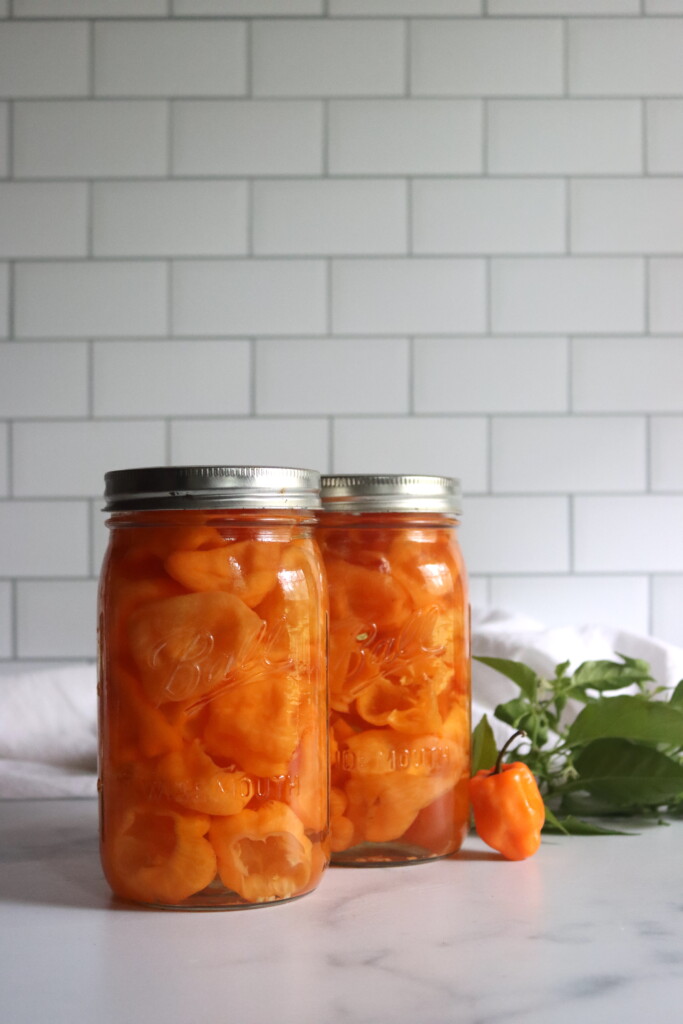
How to Make Pickled Habaneros
Start by washing your peppers and putting on gloves—seriously, wear gloves. Slice off the tops and use a small spoon to scrape out the seeds and inner membranes. You can leave the peppers whole, cut them in half, or slice them into rings depending on your preference. I like to preserve them whole so I can use them in recipes that call for a certain number of peppers, but slicing makes them easier to use as a topping or condiment.
Place one clove of garlic into each sterilized pint jar if you’re using it. Pack the rest of the jar with the prepared peppers, leaving about ½ inch of headspace.
In a small saucepan, combine the vinegar, water, salt, and sugar. Bring the brine to a boil, then reduce the heat and simmer for a minute or two until the salt and sugar are dissolved.
Pour the hot brine over the peppers, making sure to cover them completely. Leave ¼ inch of headspace. Use a clean utensil to remove any air bubbles and adjust the headspace if needed.
Wipe the jar rims clean, apply the lid and ring, and process in a boiling water bath for 10 minutes for pints or half-pints (15 minutes for quarts). Add 5 minutes to the canning time if above 6,000 feet in elevation.
Let the jars cool undisturbed for 12–24 hours. Check the seals, label them, and store in a cool, dark place. For the best flavor, wait at least 2 to 3 weeks before opening.

Pickled Habaneros
Equipment
Ingredients
- 15 to 20 medium habanero peppers, seeded
- 1 clove garlic, sliced thin (optional)
- 1 cup white vinegar, 5% acidity
- ¼ cup water
- ½ tsp pickling salt
- ½ tsp sugar
Instructions
- Prepare peppers: Wash peppers and wear gloves. Cut off the tops, and remove seeds and membranes. Leave whole or slice as desired.
- Pack jar: Place garlic (if using) in the bottom of a sterilized pint jar. Pack with peppers, leaving ½ inch headspace.
- Make brine: Combine vinegar, water, salt, and sugar in a saucepan. Bring to a boil, then reduce to a simmer.
- Fill jar: Pour hot brine over peppers, leaving ¼ inch headspace. Remove air bubbles and adjust headspace if needed.
- Seal & process: Wipe jar rim, apply lid and ring, and process in a boiling water bath for 10 minutes (pints/half-pints) or 15 minutes (quarts). Add 5 minutes if above 6,000 feet in elevation.
- Cool & store: Let sit for 12–24 hours. Check seals, label, and store in a cool, dark place. Wait 2-3 weeks before opening for best flavor.
Notes
Canning Safety
This pickled pepper canning recipe is based on guidance from the Colorado University Extension, in their Fact Sheet No. 9.314 titled “Making Pickled Peppers” which provides water/vinegar ratios and canning times.Nutrition
Nutrition information is automatically calculated, so should only be used as an approximation.
Pickling Recipes
Looking for more creative recipes to preserve in your pickled pantry? Pickling recipes don’t have to be boring!
Try your hand at homemade pickled corn for a bit of sweet heat on tacos, and it works wonderfully on fish cakes and salads too.
And while veggies tend to get all the attention in the pickling world, you’d be surprised just how good a bit of pickled fruit can be. Make pickled strawberries for a sweet tangy treat beside your lunchtime sandwich (or believe it or not, on top of desserts). Pickled blueberries and pickled cherries are just as good in season.
And pickled peaches are epic with pork chops!
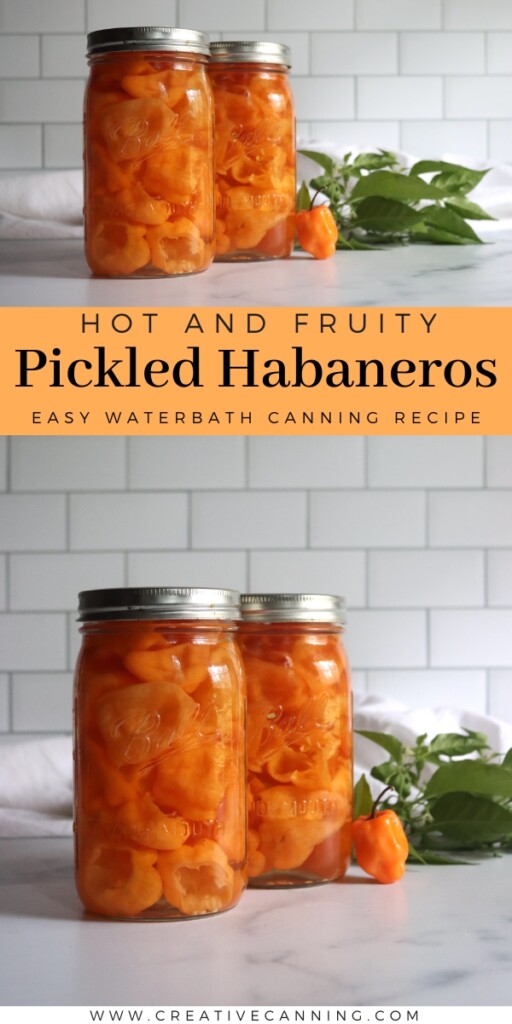

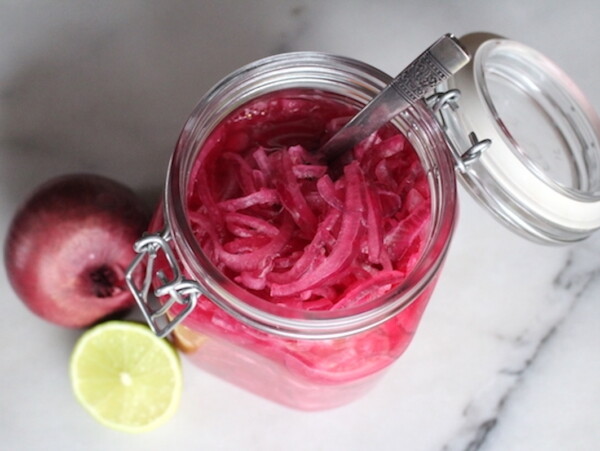

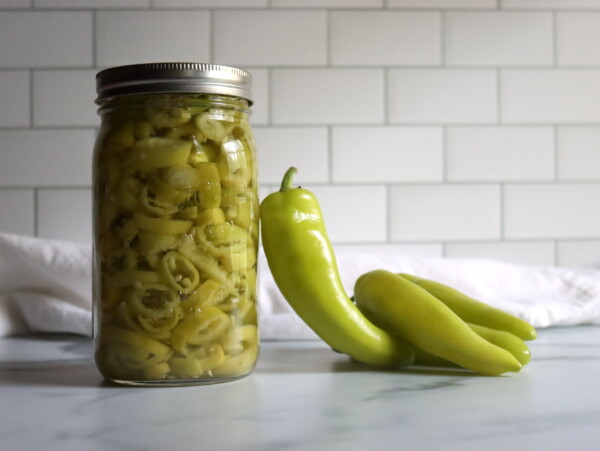
Thank you, I am starting my canning task now. Again. Thank you.
Joel
I underfilled a couple of my jars – did not pack the peppers tight enough – and I have a space with about an inch of brine at the bottom if the jars. They are not as pretty, but is this a problem in terms of canning?
Nope, that’s perfectly fine. Underfilling jars with solids isn’t a problem, provided you have plenty of the acidic brine in there. And actually, that’s really common in pickling to have jars come out looking underfilled. The thing is, most veggies shrink when they are canned, fruits too, so even if you do really load up the jars they’ll often have empty brine at the bottom. Not a safety thing, just slightly less pretty on the shelf. Still just as tasty though. Enjoy!